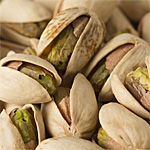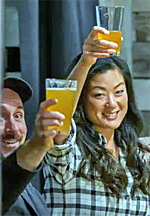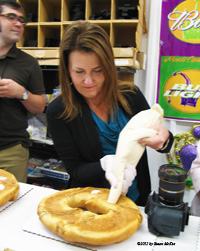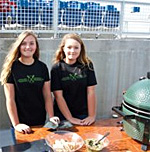Chile: The Land of Manjar
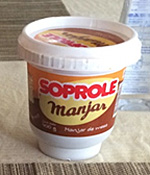 By Emily Stuebing
By Emily Stuebing
Road Trips for Foodies Special Writer
“What’s manjar?” I asked my new fellow study abroad students shortly after arriving in Chile. On the first day of orientation, a girl in my tour group told me she’d had this delicious caramel-y substance on bread for breakfast called manjar, and said I absolutely had to try it. So, I went home and asked my host parents the same question. Low and behold, there a jar already sat in “la refri” (the fridge).
“Try it!” they said, “it’s just condensed milk and sugar—you could make it yourself!” They handed me a spoon to scoop some up (though I must add I now know that this is not how it’s normally eaten; manjar is not a dessert on its own).
“Really?” I said, and tasted a spoonful. It was light and creamy, about the consistency of Nutella and tasted like caramel, but less sweet. “It’s delicious,” I said.
“Yes, I can show you. You don’t have it in the United States?” my host mother asked incredulously.
“No, we don’t.”
“I thought you had everything we did there. So it’s not even in the grocery store?”
“Not that I’ve seen.”
This left them stunned, questioning why Americans don’t have manjar and how we could’ve possibly survived for so long without it. Chileans eat manjar as a topping on just about every dessert, and can be found in the majority of homes and bakeries. It’s similar to caramel yet thinner in texture and less concentrated in sweetness, making it creamier and lighter—and easier to eat in large quantities. Manjar is sold by the jar, though I imagine bakeries must either buy manjar by the tub or go through about 50 jars a day with the way the topping is used on seemingly every dessert. Even cafes selling exotic cupcakes incorporate a Chilean twist with manjar.
Bread of all kinds and especially soft white bread is eaten daily in Chile, with at least one if not all meals of the day. It’s a delicious treat, baked fresh every morning. It’s not uncommon to then add manjar to bread for breakfast or a post-dinner dessert. In bakeries, manjar is added to pastries, like that of a “media luna.” This delicious snack is similar in taste and texture to a croissant but is in the shape of a half moon and typically enjoyed with either powdered sugar or manjar. Not only is eaten with bread, but also with cookies, churros, cake, and used as a donut filling at chains like Dunkin’ Donuts.
The topping is so common that it can even be found in condiment dispensers in small restaurants at bus stations. (Also unsurprising for Chile was the “palta” or avocado topping ready to be dispensed as well, though that’s another story entirely). Argentinians and Uruguayans however, would see manjar and scoff. While visiting friends in Uruguay I tried dulce de leche for the first time, which is a topping made and used similarly to manjar—many websites even claim that manjar and dulce de leche are the same thing—and though they are often made with the same ingredients, it’s evident that Chilean manjar is lighter and creamier than dulce de leche and must be cooked differently. Upon tasting dulce de leche, I said, “This is great! Kind of like manjar.”
Immediately my Uruguayan friend said, “Yes, but dulce de leche is better.”
I later visited friends in Argentina and enjoyed dulce de leche on apples, this time choosing not to mentioning the similarity. “I love this stuff,” I said.
Without being prompted to do so, my Argentinian friend replied, “Me too. It’s kind of like manjar in Chile. Have you had it?”
I nodded.
 “Yeah except this is better. Manjar is just a dulce de leche knock-off.”
“Yeah except this is better. Manjar is just a dulce de leche knock-off.”
Despite what the Uruguayans and Argentinians may say, manjar truly is delicious and makes a great topping, even if only occasionally for those who are health and/or weight-conscious. It was my obsession while living in Chile, so much so that my host mom often joked that we should start a manjar shipping and distribution company together. I decided to cut back a bit, however, once my jeans started to get a little tighter. When I turned down their offer to eat manjar one night after dinner, my host family immediately knew why.
“She had too much too fast,” my host father said.
“She’s watching her weight,” my host mother said.
Though I don’t attribute all of my weight-gain while abroad to my initial addiction and over consumption of this tasty treat, it is good to remember that it’s a dessert topping and should probably be eaten in moderation. If you are in Chile though, especially if only for a short period of time, I recommend trying manjar and taking advantage of the fact that it’s there. If you like it and want to eat it every day, please do!
Though there are similar toppings, like the dulce de leche I mentioned, in surrounding countries, but the way it’s made and consumed in Chile is unique and best enjoyed at every opportunity. Because, in the words of my friend’s wise Chilean host mother, “If you don’t have manjar, what do you put on cake?”
(Photos provided by Emily Stuebing)


